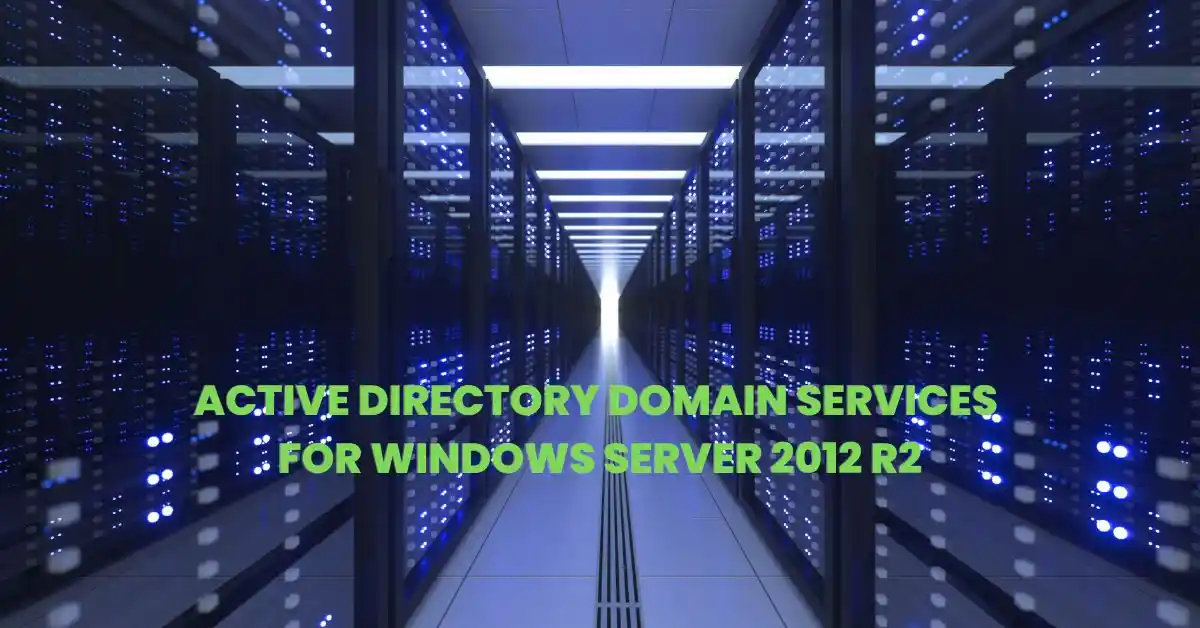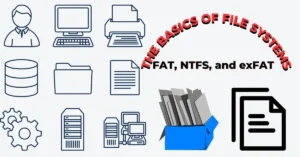The Active Directory Domain Services (AD DS) plays a very important role in managing and organizing resources within a Windows Server environment. AD DS provides a centralized directory service that enables administrators to efficiently manage user accounts, computers, and other network resources. We are going to learn Active Directory Domain Services, its benefits, installation process, configuration, management of objects, group policy management, replication, troubleshooting, and best practices.
Understanding Active Directory Domain Services
Active Directory Domain Services is a hierarchical database system introduced by Microsoft, primarily used in Windows Server environments. The AD DS is a centralized repository for network resources. It will allow administrators to control access, enforce security policies, and streamline management tasks. AD DS employs a domain-based model, where resources are organized into logical units known as domains.
Domains serve as administrative boundaries and define the scope of policies and security settings that can be applied to the resources within them. These resources are created and managed such as user accounts, groups, computers, and organizational units (OUs). These objects form the building blocks of AD DS and enable efficient management of network resources.
Benefits of Active Directory Domain Services
Active Directory Domain Services offers numerous benefits for organizations:
- Centralized Management: AD DS provides a single point of administration for user accounts, computers, and other network resources, simplifying management tasks.
- Scalability and Flexibility: It allows organizations to scale their infrastructure by adding new domains and domain controllers as needed, accommodating growth and geographical distribution.
- Enhanced Security: AD DS enables the implementation of security policies, access controls, and authentication mechanisms to protect sensitive resources and data.
- Efficient Resource Sharing: Users can access shared resources across the network easily, facilitating collaboration and productivity.
- Group Policy Management: AD DS offers robust group policy management capabilities, allowing administrators to define and enforce policies across the network.
Installing Active Directory Domain Services
These steps need to follow for installing AD DS on Windows Server 2012 R2.
- From the taskbar or Start menu of Windows Server 2012 R2 start the Server Manager
- In the Server Manager dashboard, click on “Add roles and features.”
- Proceed through the wizard until you reach the “Server Roles” section.
- Select “Active Directory Domain Services” from the list of available roles.
- Review the role services required for AD DS and click “Next.”
- Continue through the wizard, selecting the appropriate features and confirming the installation.
- Once the installation completes, promote the server to a domain controller using the Active Directory Domain Services Configuration Wizard.
Configuring Active Directory
- Creating a New Forest: During the configuration, you have the option to create a new forest, which serves as the top-level domain container.
- Domain Controller Options: Choose whether to make the server a domain controller for a new domain or join an existing domain as a replica domain controller.
- Naming and NetBIOS: Specify the domain name and NetBIOS name for the new domain.
- Forest Functional Level: Select the desired forest functional level, which determines the available features and compatibility with older domain controllers.
- Additional Options: Configure additional options, such as the location for the AD DS database and log files.
Read also:
Understanding the OSI Model and TCP Model: A Best Beginner Guide 2023
Introduction to Data Communication and Networking Fundamentals 7 Layer of OSI
The Basics of File Systems: 3 File System FAT, NTFS, and exFAT
Step-by-Step Active Directory (ADDS) Installation & Configuration – Windows Server 2012
We are going to give Step-by-Step Active Directory (ADDS) Installation & Configuration on Windows Server 2012. Before installation change the Computer Name.

Then Change the IP Address of The server (Ethernet Configuration)
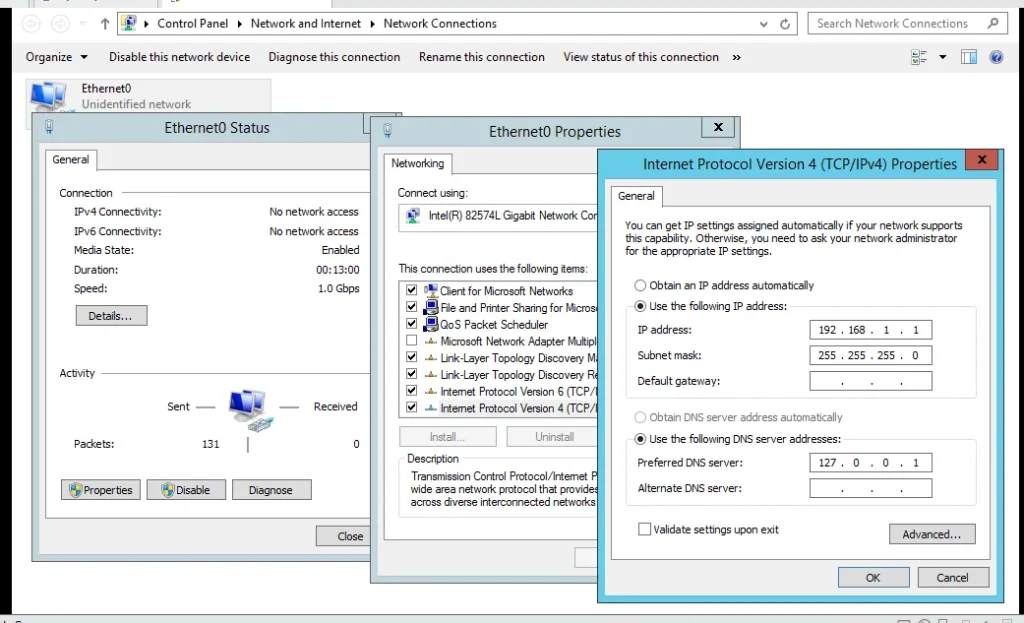
Step 1: First start the Server Manager
Step 2: Configure this local server

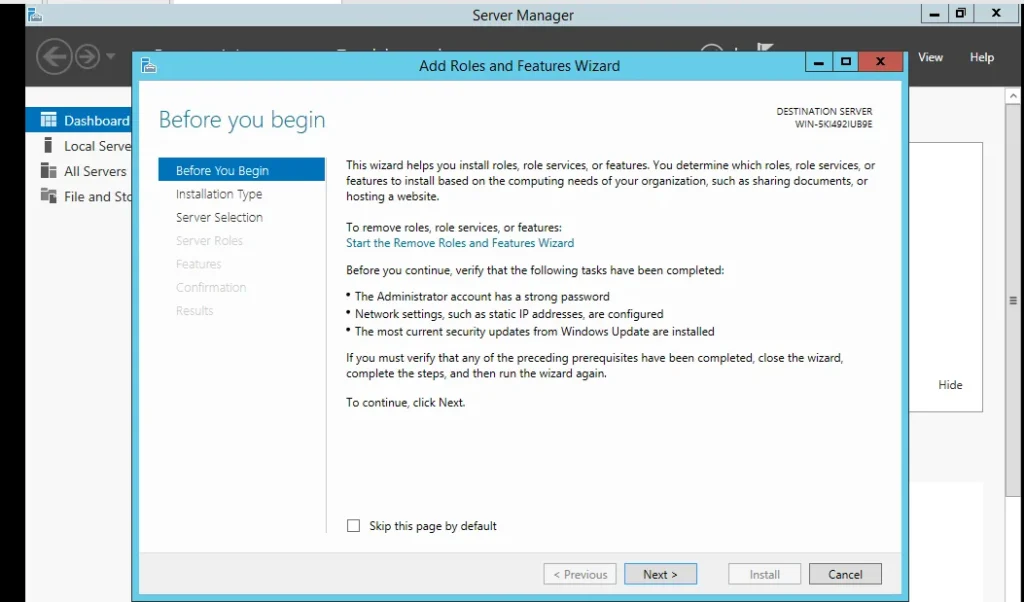
Step 3. (Before You Begin)Add Roles and Features Wizard– Click Next Button
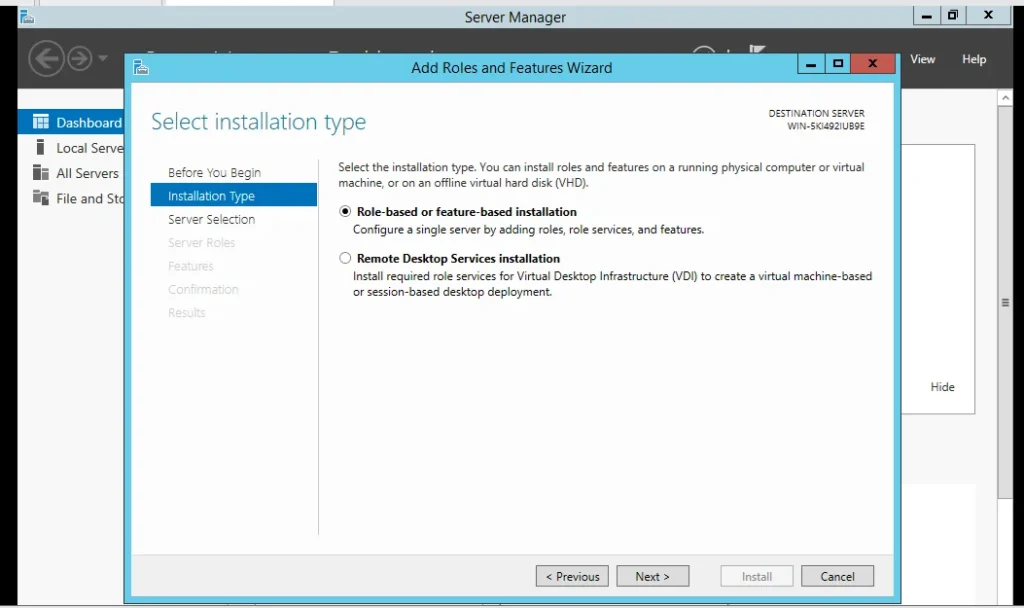
Step 4. Installation Type Two option 1. Role-based or features-bassed installation 2. Remote Desktop Service installation—> Choose First one–>Next
Step 5. Server Selection–> Select a Server from the Server pool—> Press Next
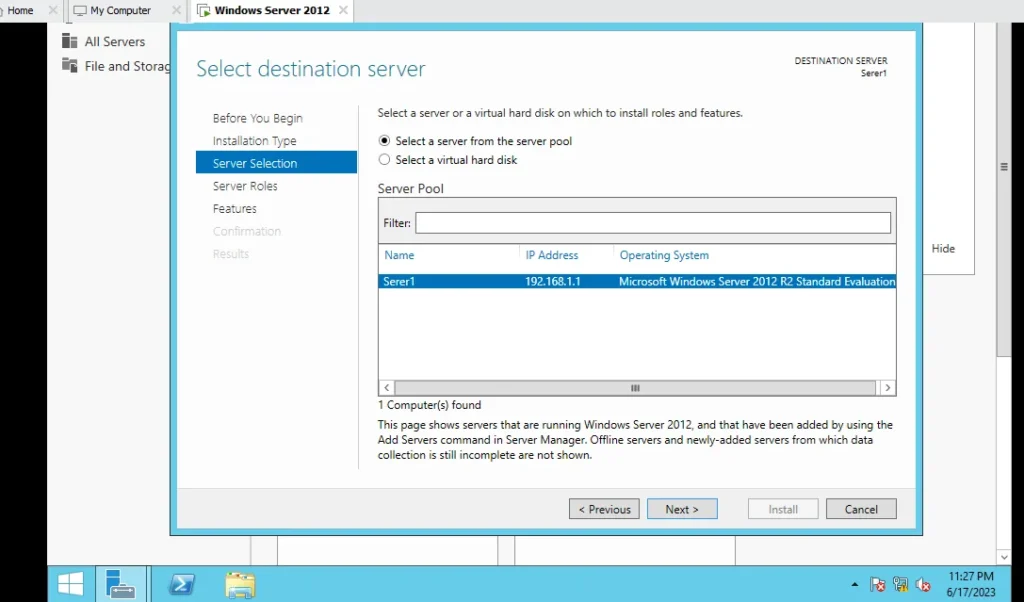
Step 6. Server Roles—> Select “Active Directory Domain Services” —-> Press the Next Button
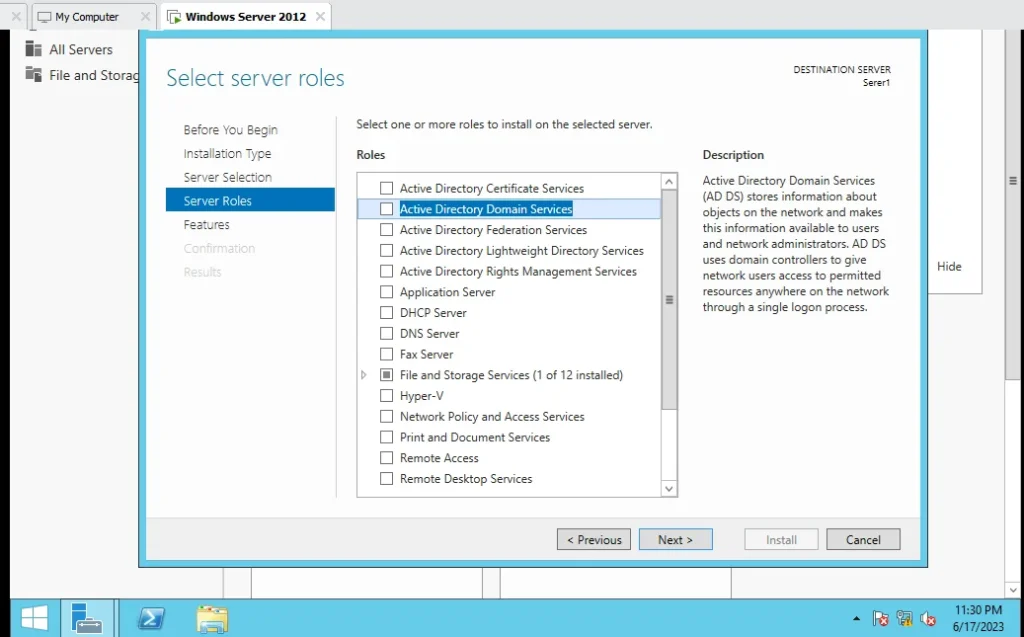
Step 7. From Add Roles and Features Wizard—> Press Add Features
Step 8. Press Next Button
Step 9. Features —> Press Next Button
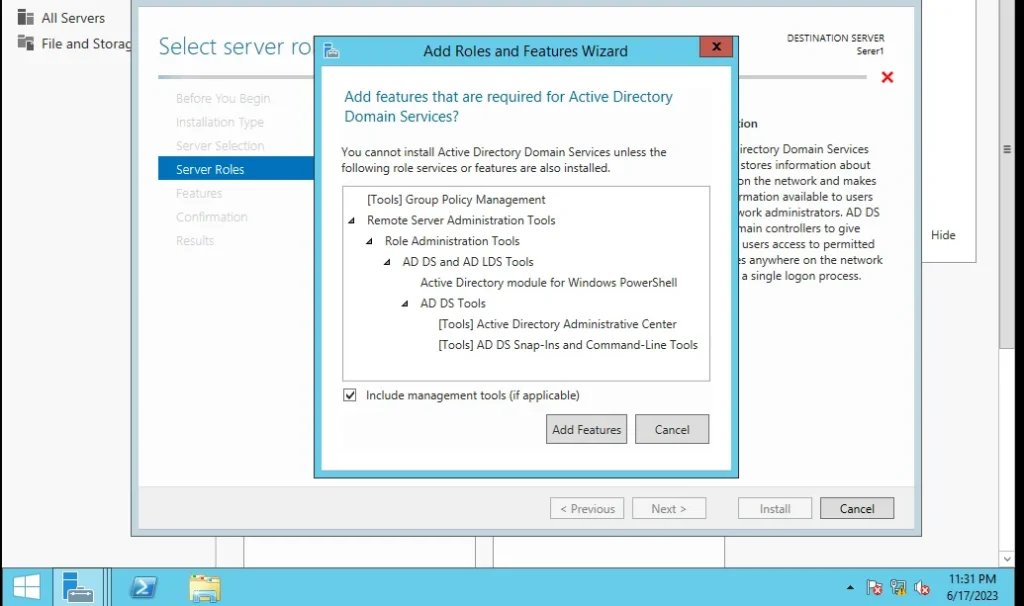
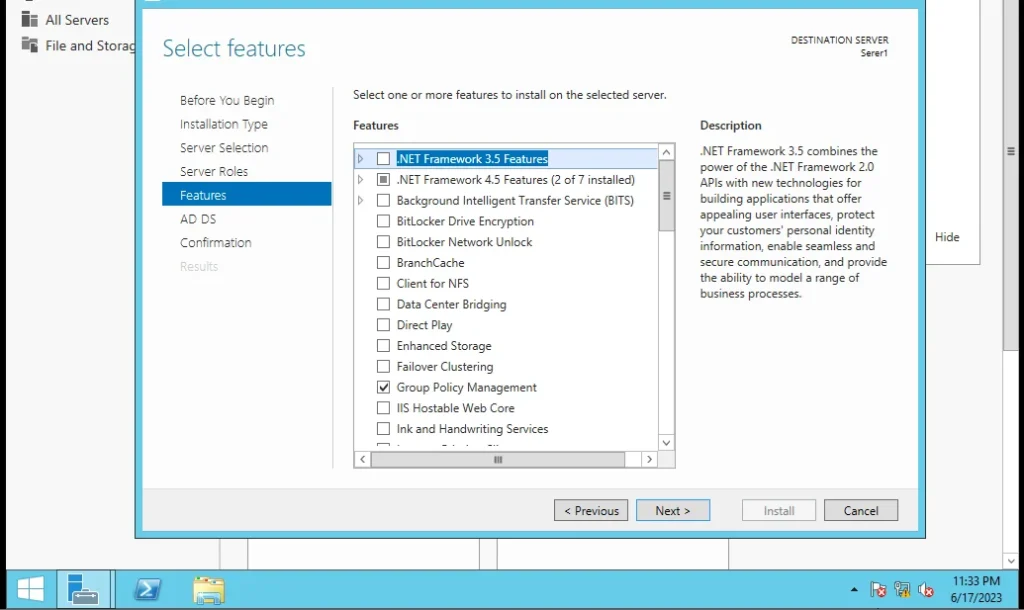
Step 10. AD DS —> Next Button

Step 11. Confirmation –> Select Restart the destination server automatically if requires —–> Press Install
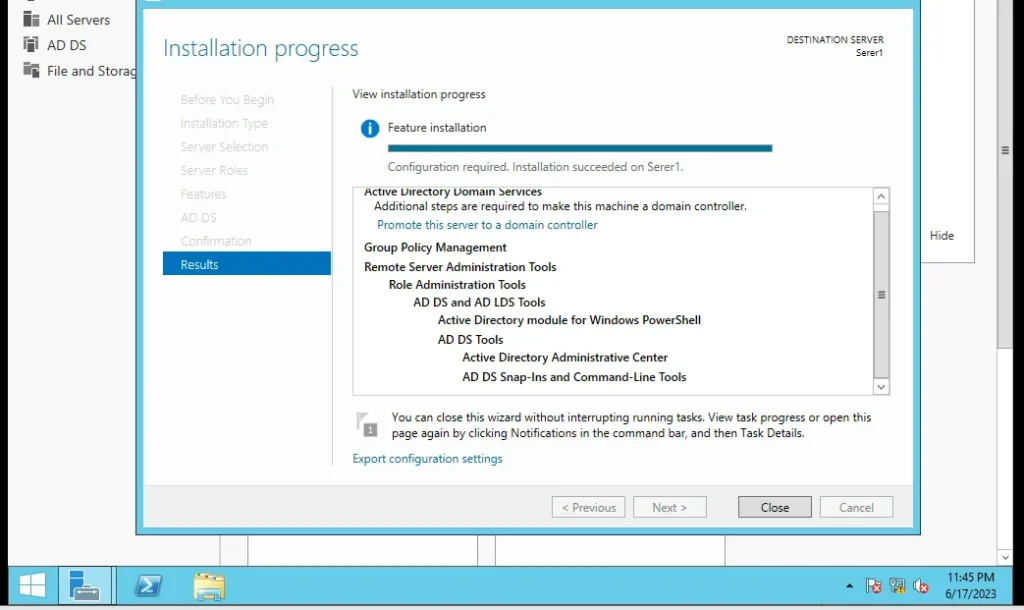

Step 13. There will be one Yellow Notification on top of Server Manager Windows just left to Manage option —> Click Promote this server to a domain controller
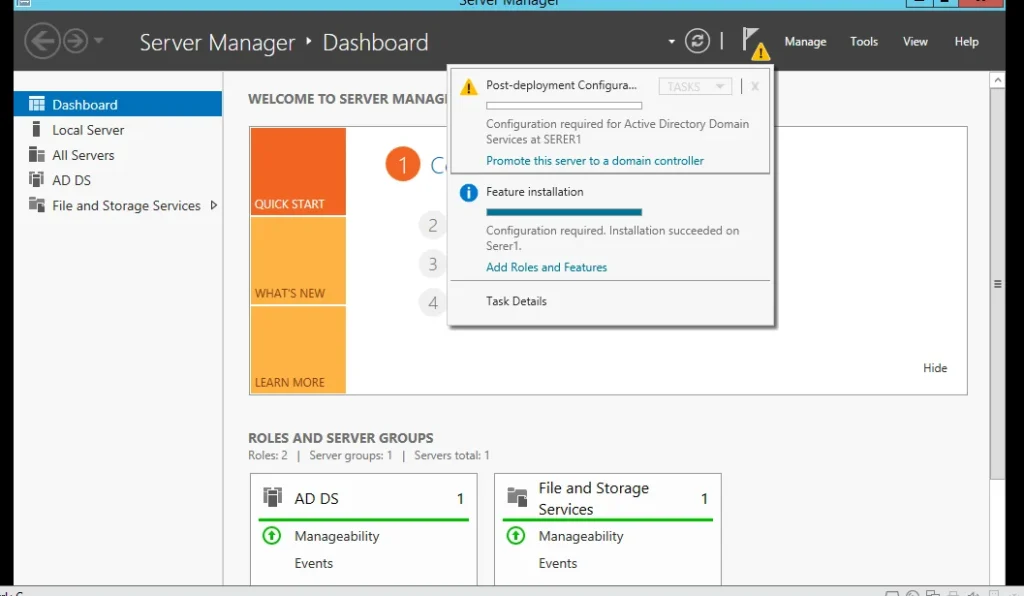
Step 14. Choose Add a new forest and Type a Root domain name in my case it is “Tech.Local” —> Press the Next button
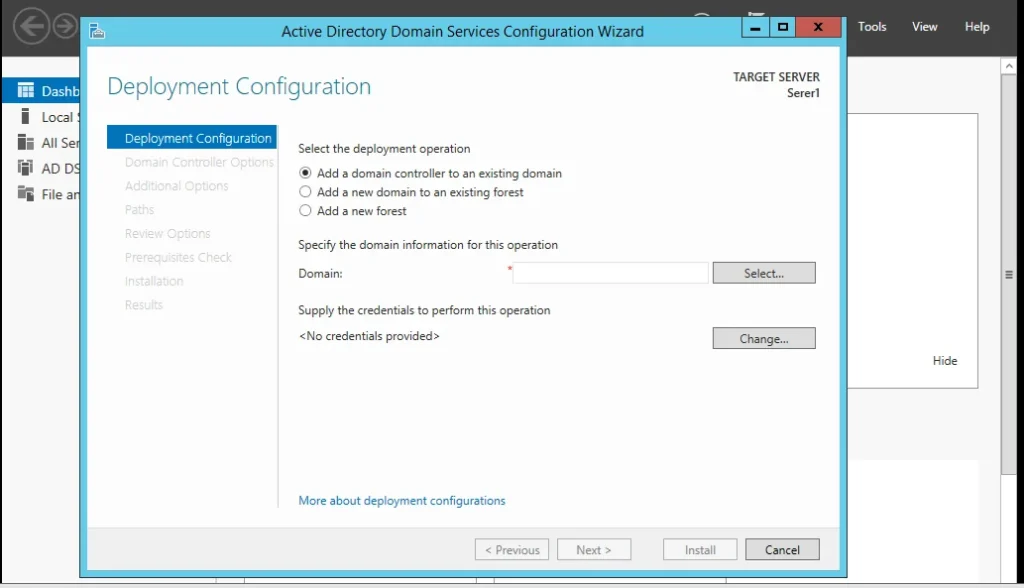

Step 15. In Domain Controller Options—> Give a password for Directory Services Restore Mode (DSRM) password —> Press the Next button
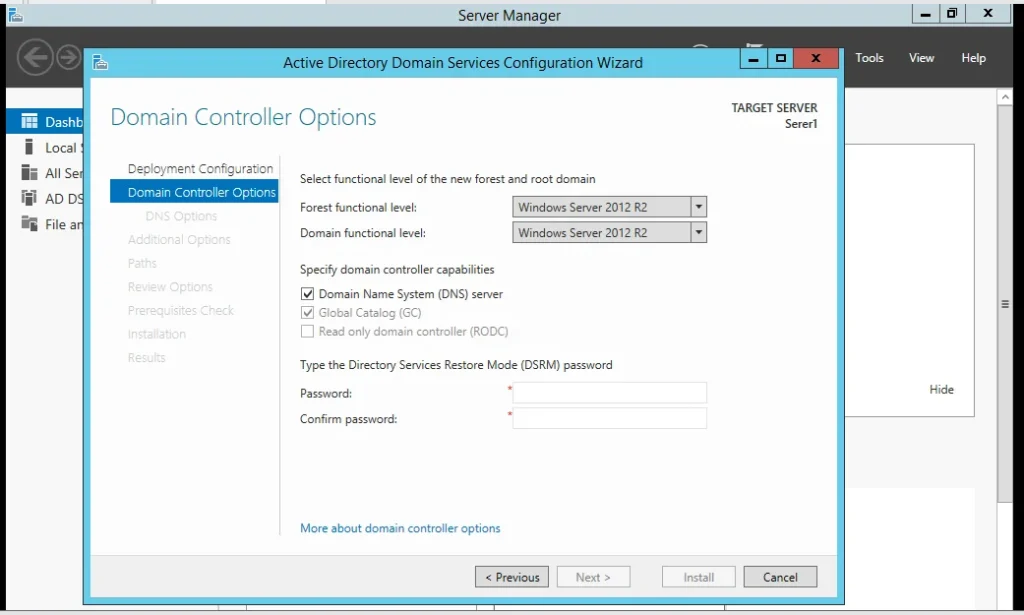
Step 16. Press Next button
Step 17. In Additional Option, The NetBIOS domain name appears in my case “TECH” —-> Press Next
Step 18. Paths —. You will see The Location of the AD DS database, log files, and SYSVOL folder name —> Press Next Button
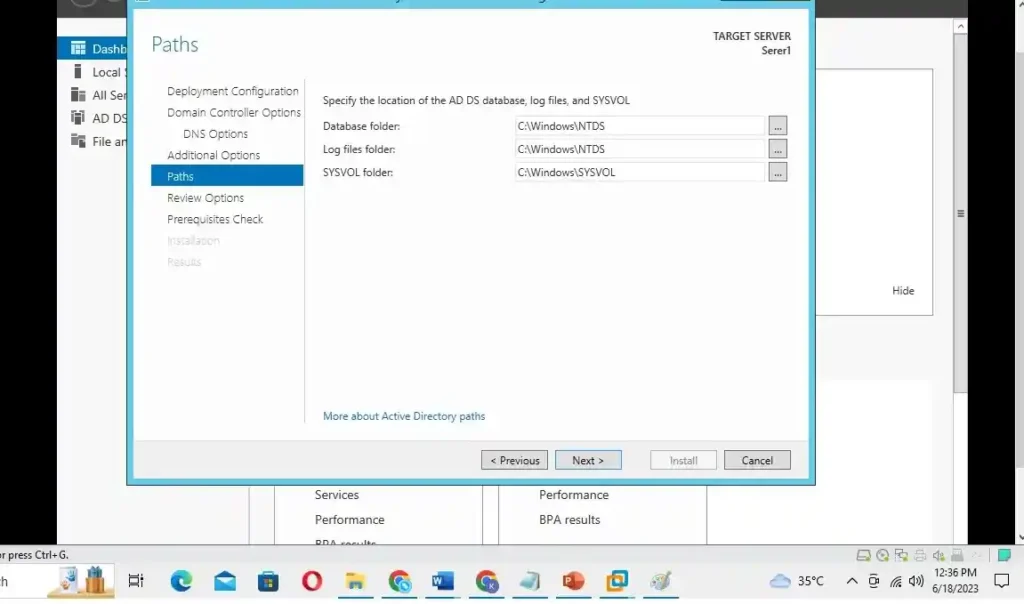
Step 19. Review Options —> Press the Next button
Step 20. Prerequisites Check —> Press the Install button

Step 21. After a few minutes, Computer Restarts, and your AD DS install, With domain Tech.Local, Congratulation
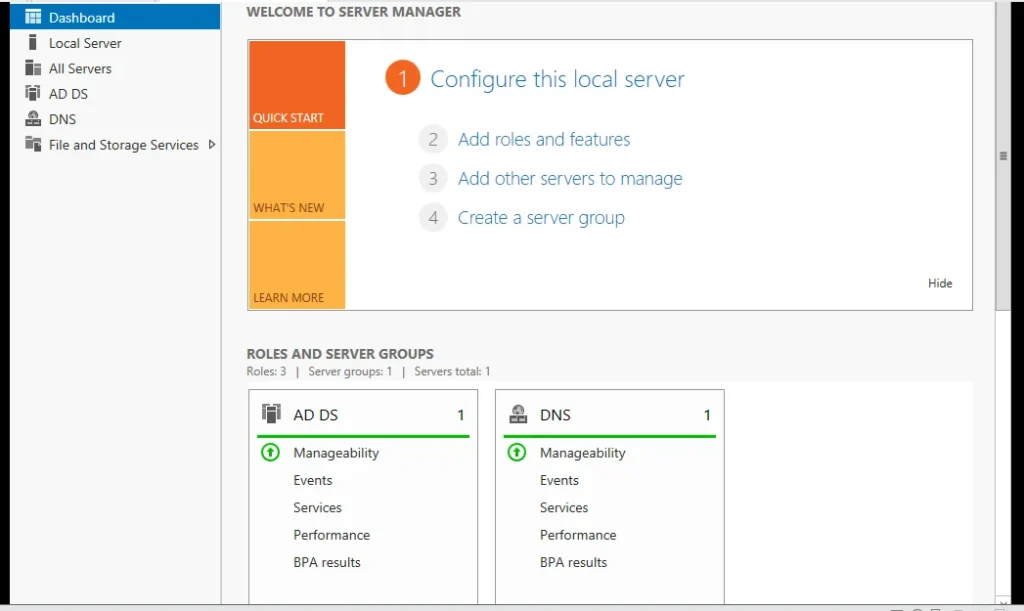
Managing Active Directory Objects
Active Directory Domain Services allows administrators to create and manage various types of objects within a domain. Some commonly used object types include:
- User Accounts: User accounts represent individuals who require access to network resources. They can be assigned various permissions and group memberships.
- Groups: Groups are collections of user accounts that share common permissions or attributes. They simplify the process of granting access rights and managing security.
- Computers: Computer accounts are used to represent physical or virtual machines on the network. They facilitate authentication and enable remote management.
- Organizational Units (OUs): OUs are containers used to organize objects within a domain. They help streamline administration and apply specific policies to grouped resources.
Group Policy Management
Group Policy Management allows administrators to define and enforce policies across an Active Directory environment. These policies control various aspects of user experience and system behavior. Some key points to consider when managing group policies include:
- Creating Group Policies: Administrators can create new group policies to enforce specific configurations or settings on client machines.
- Linking Group Policies: Group policies can be linked to domains, OUs, or individual objects to apply the defined policies.
- Group Policy Inheritance: Policies applied to parent containers, such as domains or OUs, are inherited by child objects unless explicitly blocked.
- Group Policy Filtering: Administrators can filter group policies based on security groups or other criteria to target specific users or computers.
Active Directory Replication
Active Directory replication is the process by which the changes that originate on one domain controller are automatically transferred to other domain controllers that store the same data. This process helps maintain the consistency and availability of directory data. Key aspects of replication include:
- Replication Topology: The replication topology defines the connections and paths through which replication occurs between domain controllers.
- Domain Controller Roles: Domain controllers can have different roles, such as primary domain controller (PDC) or read-only domain controller (RODC), affecting their participation in replication.
- Intersite Replication: When domain controllers span multiple sites, intersite replication controls how changes are propagated across different geographic locations.
- Monitoring and Troubleshooting: Administrators should monitor replication health and troubleshoot any replication issues to ensure a reliable Active Directory environment.
Troubleshooting Active Directory
Troubleshooting Active Directory issues requires a systematic approach. There are some common troubleshooting techniques as follows:
- Event Viewer: The Event Viewer provides detailed information about Active Directory events and can help identify potential issues.
- Replication Monitoring: Monitoring replication status and resolving replication failures is crucial for maintaining a healthy Active Directory infrastructure.
- ADSI Edit: ADSI Edit is a graphical tool that allows administrators to view and edit Active Directory objects and attributes at a low level.
- Active Directory Diagnostic Data Collector: This tool collects diagnostic data about the Active Directory environment, aiding in troubleshooting complex issues.
Best Practices for Active Directory
Implementing best practices ensures the stability, security, and performance of an Active Directory environment. Some key best practices include:
- Regular Backups: Regularly back up Active Directory to ensure data availability and simplify disaster recovery processes.
- Security Hardening: Apply security best practices, such as strong password policies, access controls, and regular patching of domain controllers.
- Monitoring and Maintenance: Regularly monitor the health of Active Directory components and perform routine maintenance tasks, such as defragmentation and database cleanup.
- Documentation and Change Management: Maintain up-to-date documentation of the Active Directory infrastructure and implement change management processes for any modifications.
Conclusion
Active Directory Domain Services is a fundamental component of Windows Server 2012 R2 that provides centralized management of resources within a network environment. By understanding the benefits, installation process, configuration, management, group policy management, replication, troubleshooting, and best practices of AD DS, administrators can create a robust and secure Active Directory infrastructure.
FAQ
Can Active Directory be used in non-Windows environments?
Active Directory is primarily designed for Windows Server environments, but it can integrate with other platforms using appropriate connectors or tools.
What is the difference between a domain and a workgroup?
A domain is a logical group of computers and resources that share a central directory database, while a workgroup is a collection of computers that share resources without centralized management.
Can Active Directory Domain Services be Virtualized?
Yes, AD DS can be virtualized using virtualization technologies such as Hyper-V or VMware.
Is it possible to recover Active Directory data from a backup?
Yes, regular backups of Active Directory enable data recovery in the event of hardware failure, software errors, or accidental deletion.
